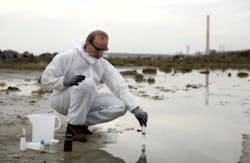Treatment facility planned for Superfund site
LOS ANGELES — The Los Angeles Department of Water and Power (DWP) has plans to construct a $600 million-dollar water treatment plant in the next 20 years, according to Dailynews.com.
The facility would send captured rainwater into the San Fernando Valley Groundwater Basin before being used as drinking water, noted the article. The basin has also been severely contaminated by aerospace and other industries, making it one of the largest Superfund contamination sites in the country.
The pollution has rendered about half the valley’s wells inoperable, reported the article. The city has prioritized increasing the local water supply, but cleaning up the basin is a work in progress.
DWP leaders are seeking approval on the project, stated the article. With its use, the city could use four times the water it usually gets from the valley. Officials aim to submit the application by 2017 to match “state funding from the Proposition 1 water bond.”
"The whole treatment plant is critical to our local water supply plans,” said Marty Adams, DWP deputy senior assistant general manager, in the article. As pollution levels rise, the city cannot continue to pump water from wells in the region, and the treatment plant could help.
Dangerous levels of tricholoroethylene, tetrachloroethylene, nitrates, chromium, and other contaminants have been detected in the basin, shared the article. The cleanup process has been long, and the city plans “to pump and treat the water instead of cleaning it before pumping.”
Officials also have plans to treat sewer effluent to help replenish the groundwater supply in the Sepulveda Basin with a $400 million-dollar water recycling facility, noted the article.
You can find the entire article here.
